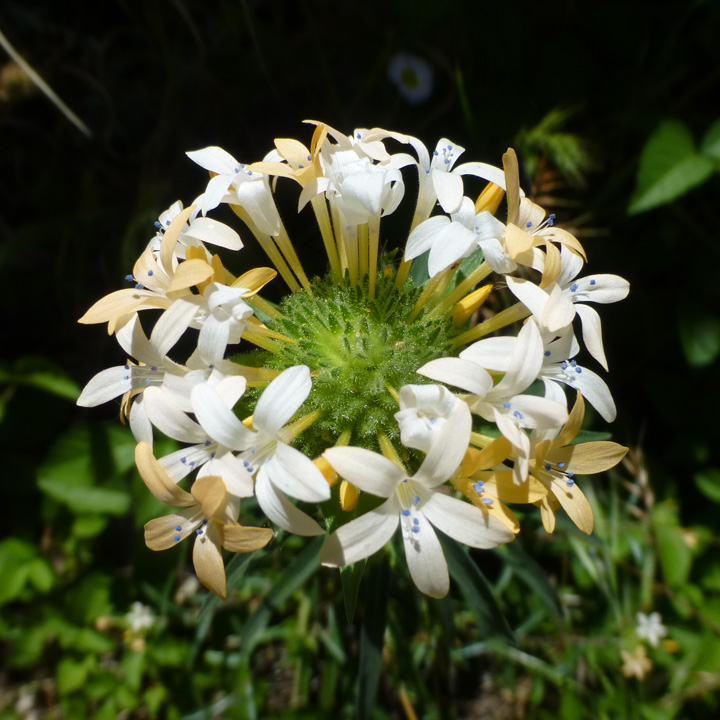Collomia
|
Family: Polemoniaceae |
PLANT: Annuals or perennials. LEAVES: mostly alternate, simple to lobed. INFLORESCENCE: terminal and axillary, compact, subcapitate or rarely solitary, bracteate. FLOWERS: perfect, actinomorphic, subsessile; calyx herbaceous, becoming membranous, not ruptured in fruit, the membranes distended or carinate in fruit, the ribs and lobes with prominent veins in fruit, acute to acuminate; corolla funnelform to salverform, blue, red, yellow or white; stamens equally or unequally inserted in the corolla tube; filaments mostly unequal in length; anthers included to exserted; style included to exserted. CAPSULE: ovoid to ellipsoid, explosively dehiscent; seeds (in AZ) 1 per locule, gelatinous when wet. 2n = 16. --15 spp., w N. Amer., NOTES: 1-2 sp. in S. Amer. (from the Greek kolla, meaning glue, referring to the seeds when wetted). Wherry, E. 1944. Amer. Midl. Nat. 31: 216-231. REFERENCES: Dieter H. Wilken and J. Mark Porter, 2005, Vascular Plants of Arizona: Polemoniaceae. CANOTIA 1: 1-37. Cal-tube chartaceous, of nearly uniform texture throughout, not ruptured by the developing fr, the lobes greenish and commonly more herbaceous; cor tubular- funnelform to nearly salverform; stamens included, often unequal or unequally inserted; seeds 1-3 per locule, those of the annual spp. becoming mucilaginous when wet; annual (seldom perennial) herbs with alternate, entire (ours) to variously dissected lvs, but without well defined lfls; fls mostly in terminal, head-like cymes. 13, temp. New World, mostly w. U.S. Gleason, Henry A. & Cronquist, Arthur J. 1991. Manual of vascular plants of northeastern United States and adjacent Canada. lxxv + 910 pp. ©The New York Botanical Garden. All rights reserved. Used by permission. |

